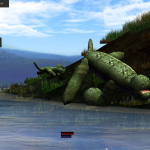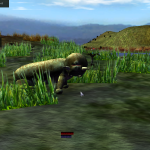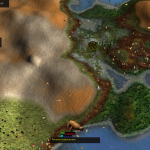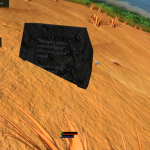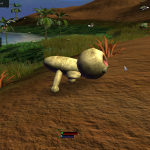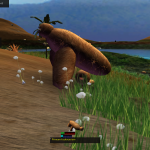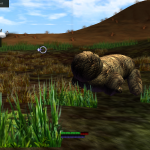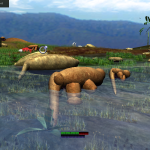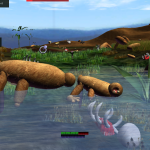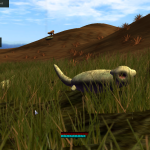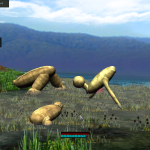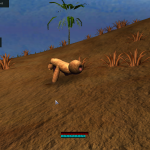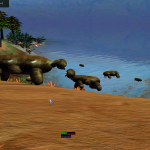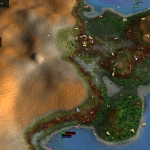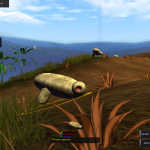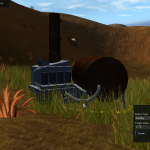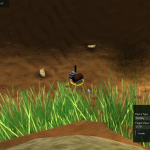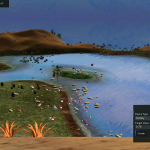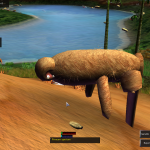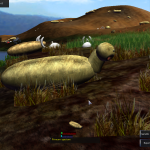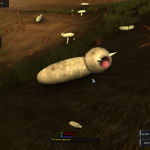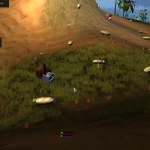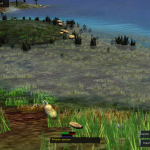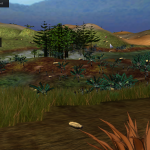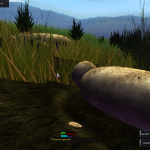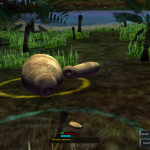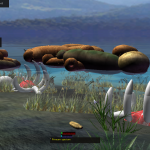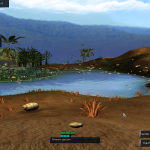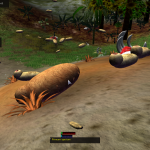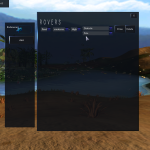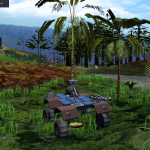 Not that it was especially surprising, but the population actually went up and started to threaten the population cap when it floated over 800. Toying with the ecology helped take their numbers down to about 350, though. I slowly raised the water level to give most of the creatures time to reach shore and I increased the fertility to compensate for smaller available land. Eventually, the area was split up into islands and the total population dipped to a meager 150. I boosted the land’s fertility.
Not that it was especially surprising, but the population actually went up and started to threaten the population cap when it floated over 800. Toying with the ecology helped take their numbers down to about 350, though. I slowly raised the water level to give most of the creatures time to reach shore and I increased the fertility to compensate for smaller available land. Eventually, the area was split up into islands and the total population dipped to a meager 150. I boosted the land’s fertility.
When I was finished, the Water level reached 0.6, and the fertility of the land was 0.8 but the limited land prevented huge populations – despite the increased fertility of the land, creatures were still competing for food and bald, eaten patches of earth started to show through. With three separate islands, however, I had a new environmental influence in my world. The population’s rise and fall was starting to become cyclic as food came and went.
Finally, the islands were mostly separated and the creatures were starting to look more and more interesting. My favorite of the four above is probably the brown pig-like creature. They’re cute in a way.
